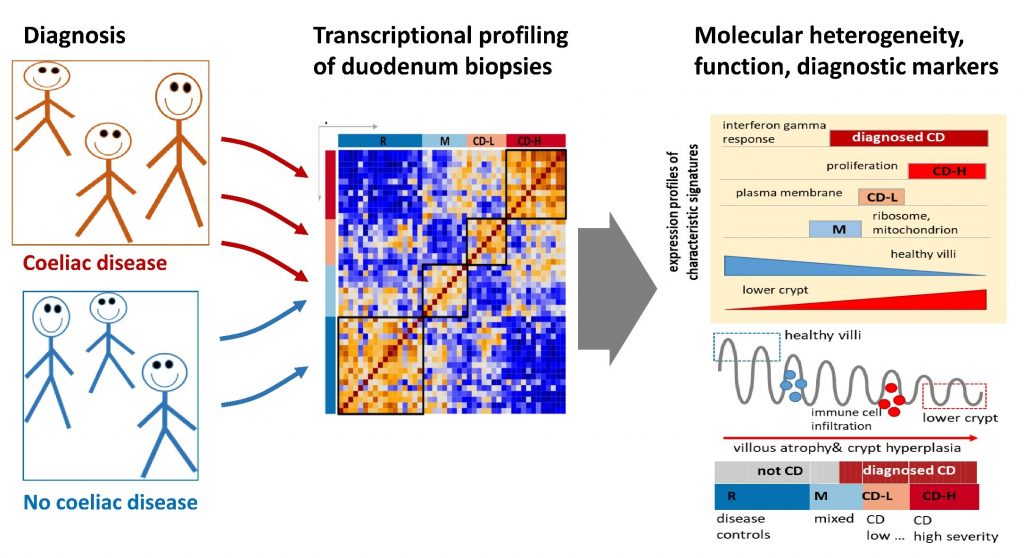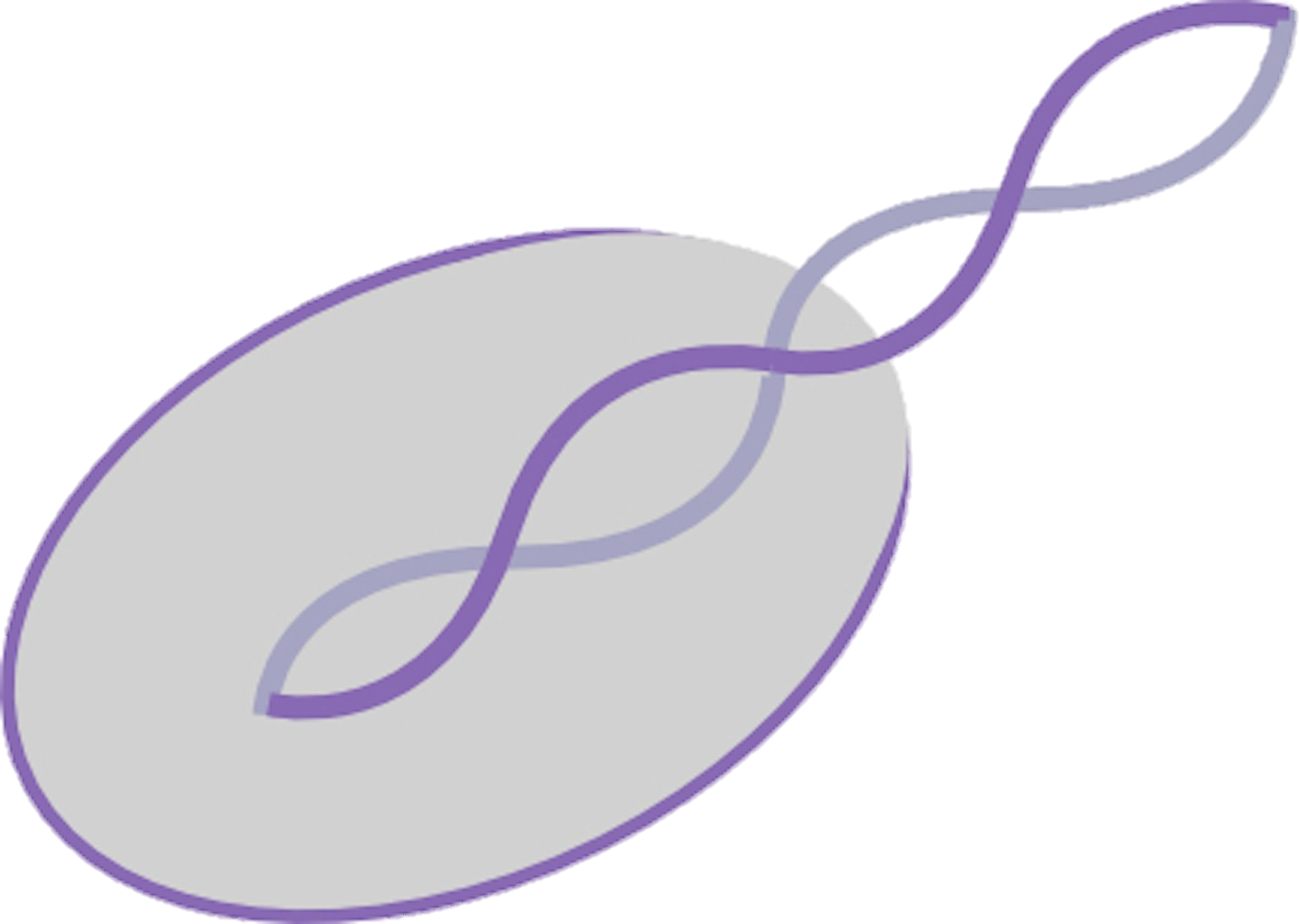International Journal of Molecular Sciences 2021, 22(5):2551.DECIP
Wolf J, Willscher E, Loeffler-Wirth H, Schmidt M, Flemming G, Zurek M, Uhlig HH, Händel N, Binder H

click here, to read the full article: https://www.mdpi.com/1422-0067/22/5/2551
ABSTRACT
Coeliac disease (CD) is a clinically heterogeneous autoimmune disease with variable presentation and progression triggered by gluten intake. Molecular or genetic factors contribute to disease heterogeneity, but the reasons for different outcomes are poorly understood. Transcriptome studies of tissue biopsies from CD patients are scarce. Here, we present a high-resolution analysis of the transcriptomes extracted from duodenal biopsies of 24 children and adolescents with active CD and 21 individuals without CD but with intestinal afflictions as controls. The transcriptomes of CD patients divide into three groups—a mixed group presenting the control cases, and CD-low and CD-high groups referring to lower and higher levels of CD severity. Persistence of symptoms was weakly associated with subgroup, but the highest marsh stages were present in subgroup CD-high, together with the highest cell cycle rates as an indicator of virtually complete villous atrophy. Considerable variation in inflammation-level between subgroups was further deciphered into immune cell types using cell type de-convolution. Self-organizing maps portrayal was applied to provide high-resolution landscapes of the CD-transcriptome. We find asymmetric patterns of miRNA and long non-coding RNA and discuss the effect of epigenetic regulation. Expression of genes involved in interferon gamma signaling represent suitable markers to distinguish CD from non-CD cases. Multiple pathways overlay in CD biopsies in different ways, giving rise to heterogeneous transcriptional patterns, which potentially provide information about etiology and the course of the disease.
